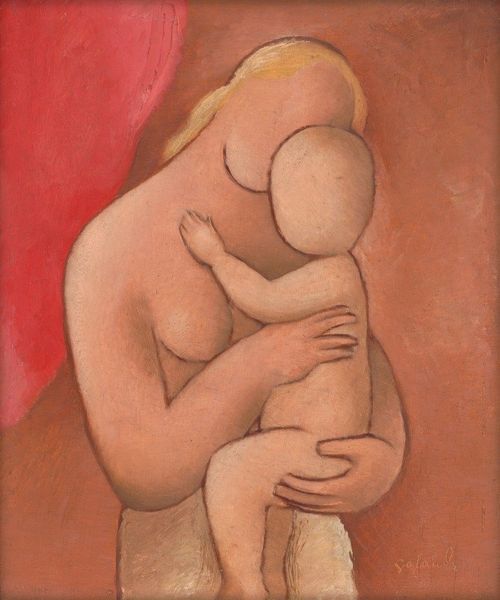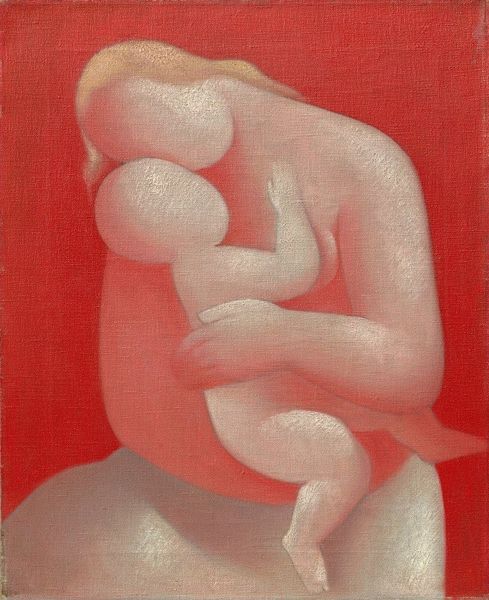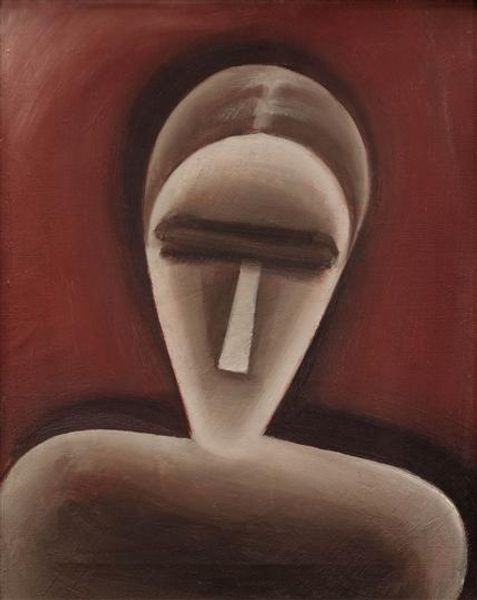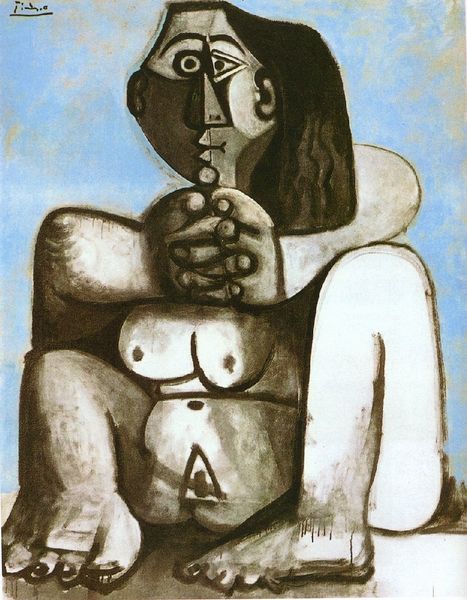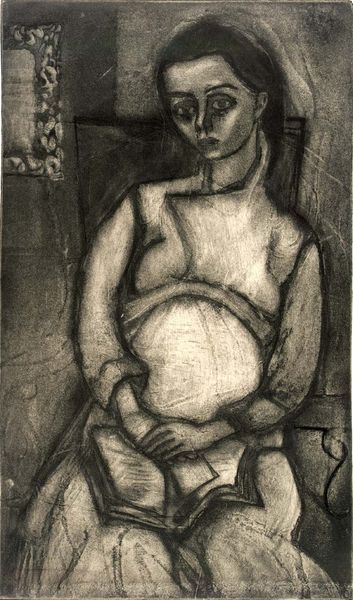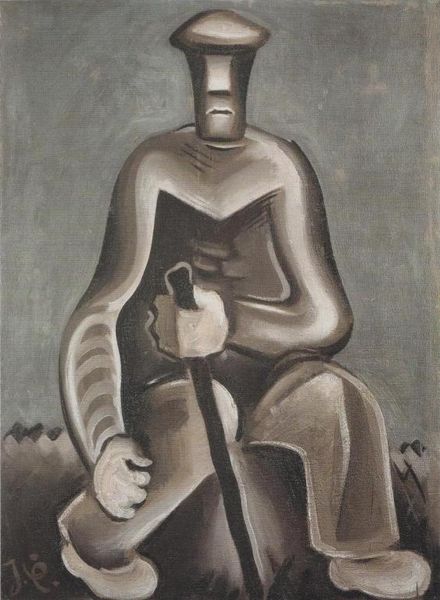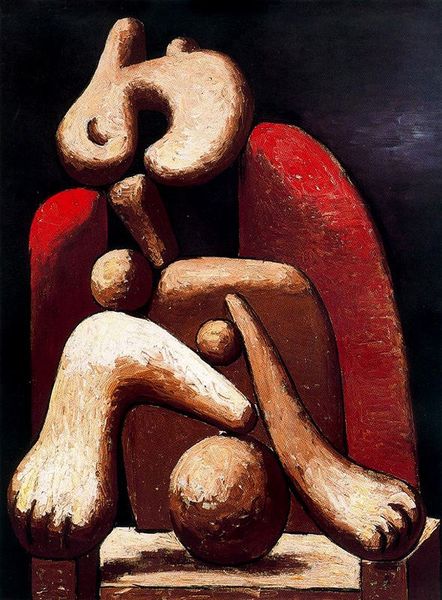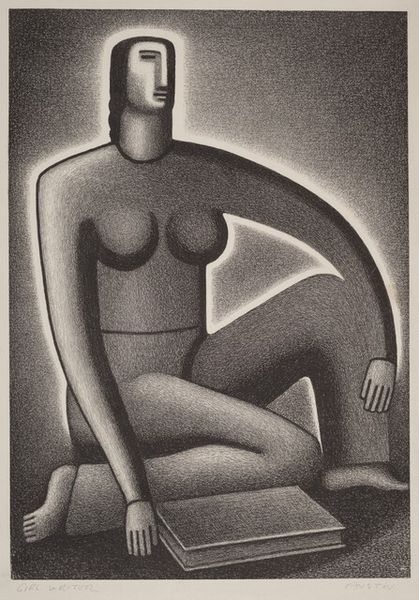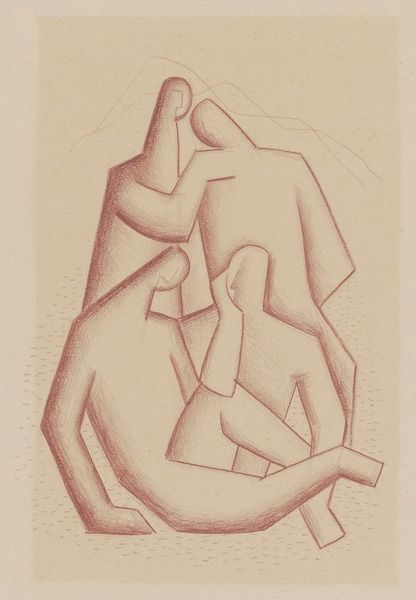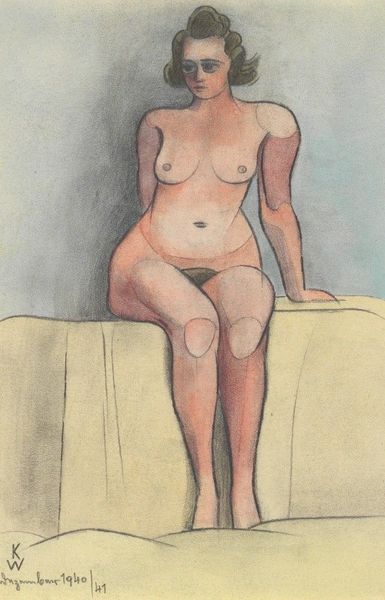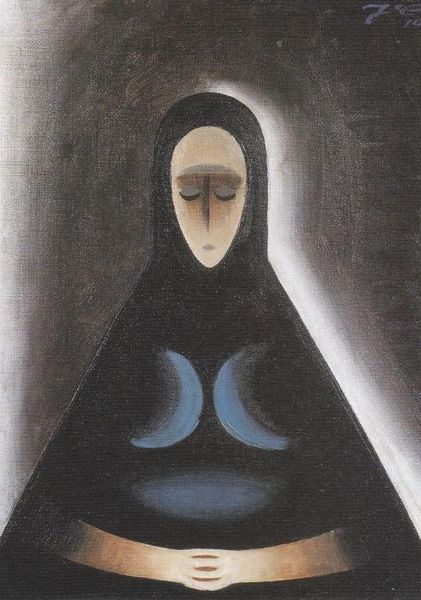
painting, oil-paint
#
portrait
#
narrative-art
#
painting
#
oil-paint
#
figuration
#
expressionism
#
modernism
Copyright: Public domain
Editor: So, this is Josef Capek's "\u017debra\u010dka s d\u00edt\u011btem," painted in 1918. It's an oil painting, and I'm immediately struck by the somber mood and the way the figures are almost abstract, especially the faceless mother figure. What social statements do you think Capek was trying to make? Curator: Capek painted this during a period of immense social upheaval across Europe. Consider how the geometric shapes and muted colors evoke a sense of dehumanization and alienation, mirroring the trauma of war and the economic hardship faced by many mothers and children. How does the facelessness of the mother relate to broader societal issues around female identity during that time? Editor: It’s as if she’s been stripped of her individual identity, representing all mothers struggling during that period. The simplification almost universalizes her experience. Curator: Precisely. And it's important to remember that Capek was deeply involved in avant-garde circles, reacting against traditional modes of representation. Do you think the lack of individual features shifts our focus towards the themes of poverty and societal neglect, rather than individual suffering? Editor: I see what you mean. It's less about one specific mother and child, and more about the systemic issues that created their hardship. What role does Expressionism play here in emphasizing these social critiques? Curator: Expressionism served as a vital tool. Capek uses the style not just for aesthetic reasons but as a visceral language to protest against the status quo, highlighting the emotional and physical toll exacted by societal forces on marginalized groups. It pushes the viewer to confront uncomfortable realities. Editor: That gives me a totally different perspective on it. I was caught up in the artistic style but missed the broader context. Curator: Indeed, recognizing art as embedded in its sociopolitical landscape expands our understanding beyond the purely aesthetic and enables a more nuanced, critical appreciation. Editor: Thank you. I am so glad to understand how that context helps uncover deeper meanings and connect the art to real-world issues.
Comments
No comments
Be the first to comment and join the conversation on the ultimate creative platform.
